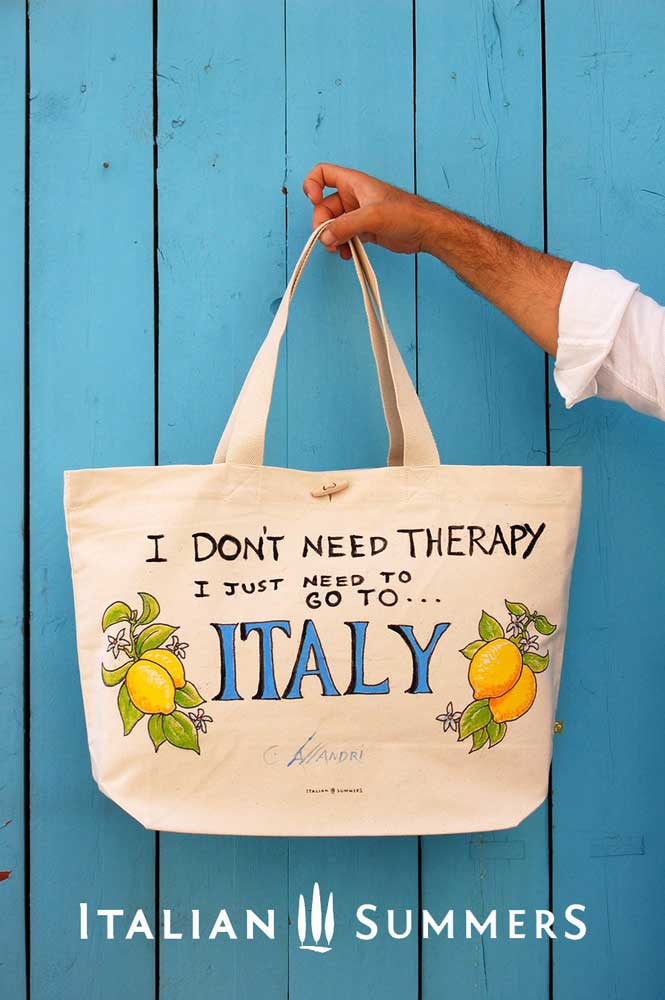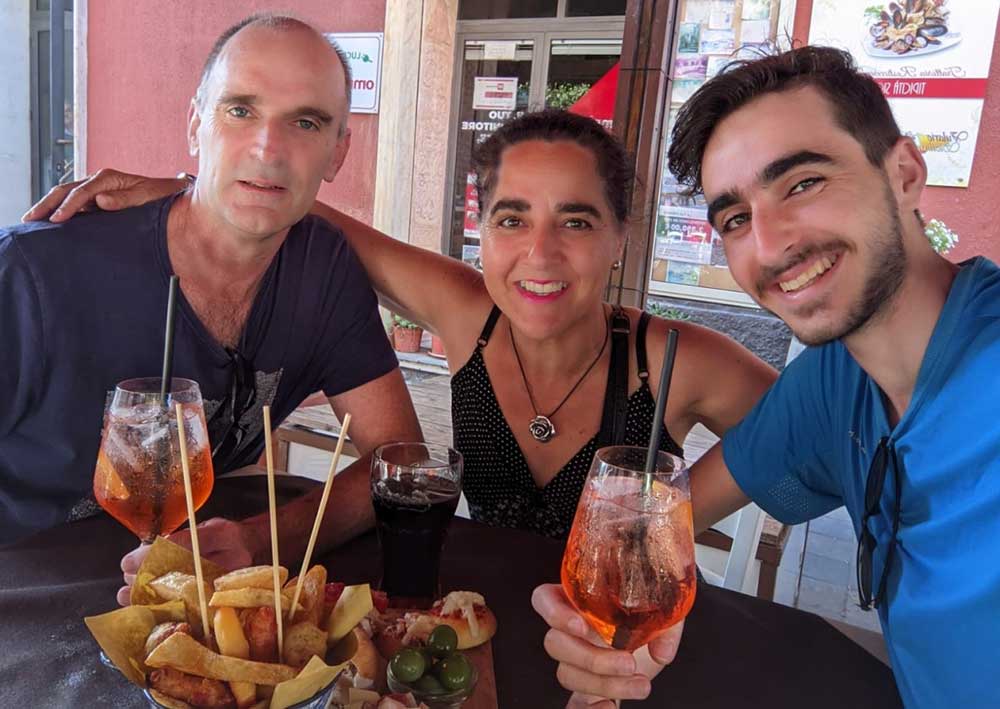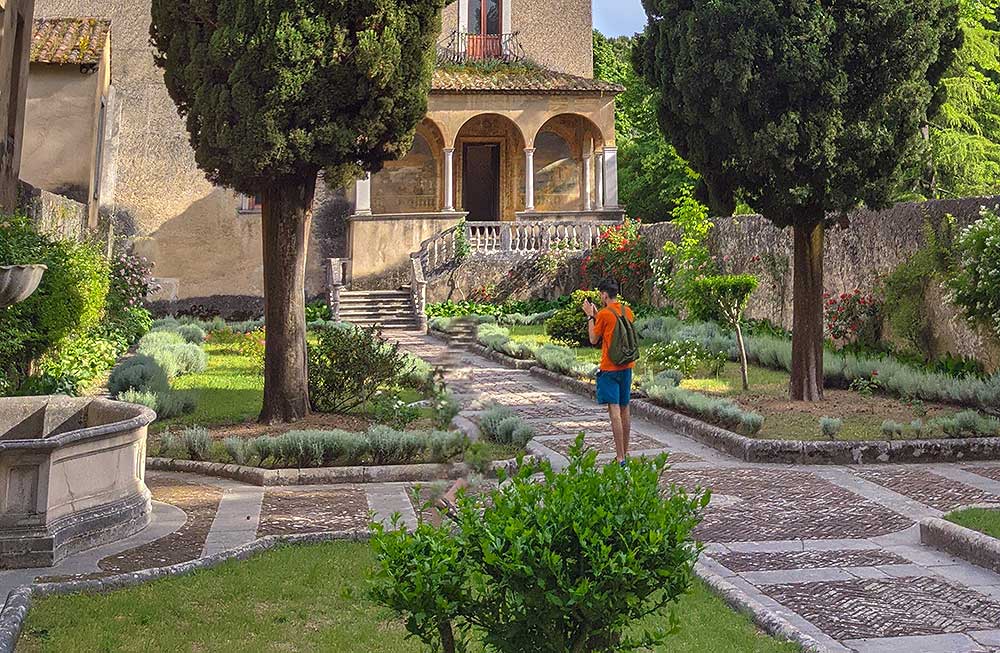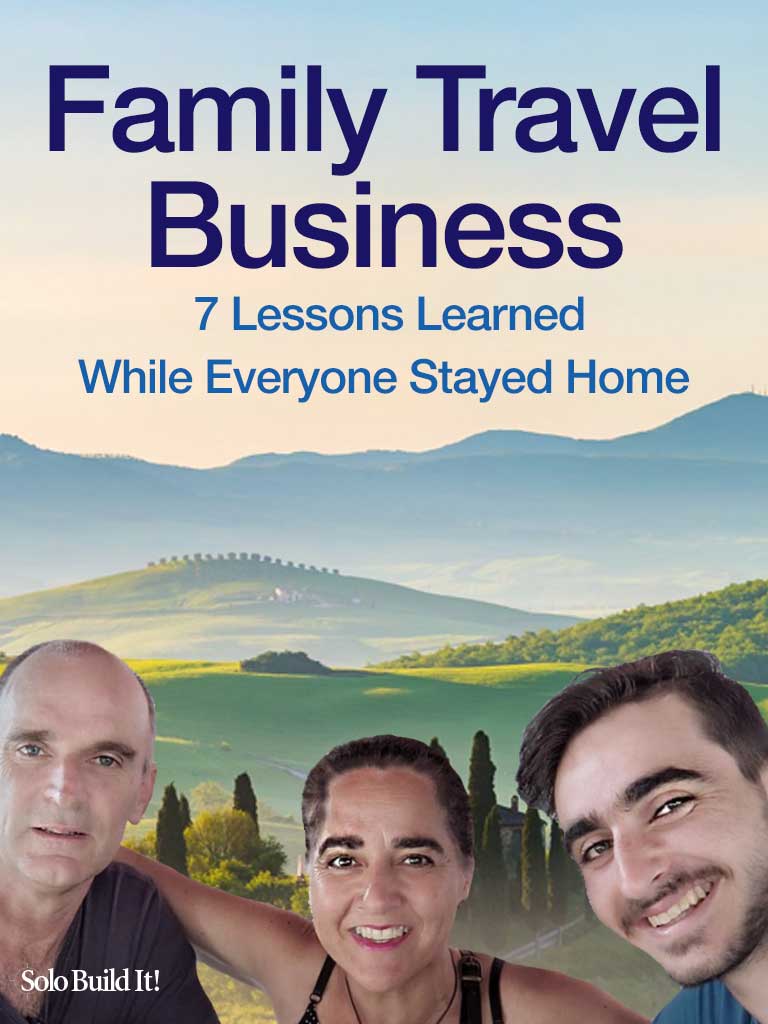
Social media platforms change all the time. I adapt my posting strategy almost on a daily basis. I do it by always experimenting, trying new things, and then doing more of that which is working.
Andrew Smith, miomyitaly.com
Family travel business owners Andrew Smith and his wife Maria are social media wizards. You’d probably call them “influencers” nowadays.
Granted, they have the advantage that their business topic is extremely photogenic — who doesn’t love looking at pictures of beautiful coastlines in Italy and elsewhere?

Still, it takes a lot of consistent work and creativity to grow the type of engaged communities Andrew and Maria built. Their main Facebook Page has over 410,000 followers. Their second biggest one has “only” 106,000. 😉
Take a minute to browse through some of their posts and the comments. You’ll sense that there’s a real community of Italy lovers there, and how much they appreciate the inspiring photos, videos and practical tips they get.
Social media is, of course, only part of their family travel business presence. The foundation is their three Solo Build It! websites:
All three sites are in the travel niche, which was heavily impacted by the Covid pandemic. In our 2017 interview, Andrew had told us that his main income source was hotel bookings.
We wanted to know if that’s still the case and how their businesses fared through lockdowns and travel restrictions.
Prepare to be surprised by Andrew’s answers!
1. Your three sites are in the travel niche, which was hit hard by the Covid pandemic. What impact did the pandemic have on your business and how did you cope with it?
Hotel bookings were my main source of income before the pandemic and that pretty much dried up. I realized that people couldn’t travel but still missed Italy (which is our main focus) so I tailored my sites to answer that need.
I provided products on our website and Facebook page, products like the bag in the photo below, that reminded people of Italy.

I also started monetizing on Facebook with videos and supporter subscriptions. And I worked on driving as much traffic back to my sites as I could, which boosted my Mediavine ad income.
When his main income stream (hotel bookings) dried up because of the pandemic, he focused on expanding his secondary monetization models (advertising) and introduced new ways of earning money (selling Italy-related products, monetizing on Facebook with subscriptions and video views).
I was intrigued by the possibility of monetizing video views on Facebook, so I asked Andrew about the requirements. He explained:
“The requirements are 10,000 followers plus 600,000+ video views in 60 days, including replayed minutes, but not including boosted, cross-posted or paid watch time, and at least five videos published on your Page that are active and created by you.
“The advantage is that it can give you another earnings stream, and Facebook seems to pay a little more than YouTube.”
600,000+ video views in 60 days… that’s quite a lot. If you’re wondering how to get to this level, read on. Andrew shares some tips about how he built up his strong Facebook presence further down.
2. In our 2017 interview, you listed a mix of income streams, with hotel bookings being your #1. How does your monetization mix look today? Overall, did your income increase or decrease?
My income for hotel bookings dropped dramatically. It has come back but not to previous levels.
However, all the income sources I mentioned in my reply to question #1 are well above pre-pandemic levels.
Other notable changes to my 2017 monetization mix: AdSense has been replaced by Mediavine, real estate sales have dropped and I don’t work with new direct advertisers — Mediavine earnings make that unnecessary.
Affiliate income from tour providers and Amazon have increased.
Never put all your monetization eggs in one basket.
Diversifying your potential income streams is insurance for you, and a benefit for your customer.
Think of it this way: offering your potential customers only one way to solve a problem or satisfy a need is doing them a disservice. Every visitor has the potential to contribute to your bottom line — so give each one a choice!
In the Solo Build It! Action Guide we help you choose the best monetization methods for your audience and your personal preferences — out of 17 options.
3. Most of your sites’ traffic comes from social media, not Google. Is this by design or by accident? If by design, does keyword research still play a role when you create new website content?
After I was hit by Google Panda many years ago I worked my way through the excellent report that Solo Build It! provided. Eventually, the traffic from Google returned. However, the shock of Panda made me realize I had all my traffic eggs in one basket, relying almost entirely on Google.
I realized that Google could effectively put me out of business overnight and I vowed never to let that happen again.
That was when I started on social media to market our family travel business. I had done nothing prior to that. Now, much of my traffic is either from social media or direct.
The direct traffic grew thanks to having established my brand with things like my own newsletter, building up my own subscriber base with subscriber-only content, and using the Grow feature from Mediavine.
Now, Google changes are largely irrelevant for my traffic and income. I sleep a lot better knowing that.
Keywords are still important though. They help new pages get the initial lift-off.
Overall, Google remains the single largest traffic source for most blogs and websites. People still search when they want to know about something.
Receiving all this targeted traffic for free is great. The downside? You might get caught in one of Google’s many algorithm changes and lose a majority of your traffic overnight.
That’s what had happened to Andrew. He vowed to never let it happen again and worked tirelessly on growing his traffic from other sources, mainly social media and direct traffic via his newsletter subscribers.
However, social media has its own challenges (see the next question).
Other non-Google traffic sources are the smaller search engines (Bing, Yahoo, DuckDuckGo) as well as referrals from related, non-competing sites in your niche, from forum discussions or Q&A sites like Quora.

4. Facebook, Instagram and Pinterest are infamous for their frequent changes. How do you keep up with it all? Did you have to adapt your content/posting strategy since 2017, and if so, how?
Social media platforms change all the time. I adapt my posting strategy almost on a daily basis. I do it by always experimenting, trying new things, and then doing more of that which is working.
I also look at other big pages to see what’s working for them.
On Facebook, for example, videos are not doing as well as they used to. Right now photo posts of 720px x 960px seem to do very well.
Pinterest is even trickier than Facebook. In my experience, nothing seems to work anymore. And it changes so often!
On Instagram short videos seem to do better — maybe because they’re trying to compete with TikTok.
But it’s time-consuming. It requires consistent posting and interacting with your followers. And then, when you feel you’ve finally found the right rhythm and mix of content to post, the rules change and you have to adapt.
Like Andrew says, constant experimentation is key to succeeding on social media. Observing what other influencers in your niche do helps as well.
As a Solo Build It! member, you’ll have access to Social Media Action Guides for the major platforms. They contain best practices from beginner to advanced levels, and they’re updated regularly — so that you don’t have to scramble to keep up with the many changes.
5. In our initial interview you mentioned outsourcing as one of your biggest challenges. Did you manage to make progress there? Which tasks are you outsourcing now (if any) and to whom?
I am fortunate that my son is now a huge help and does a lot of the work for my sites.
Some of the more technical, one-time tasks I outsourced to the Solo Build It! Pros, like updating my website design and creating my membership section.
I used to charge a once-off subscription fee for my paying members, but I ended that last year when Facebook subscriptions started. Now members join through Facebook. One of the SBI! Pros did all the technical work in setting this up.

This is what you see when you go to Andrew’s Facebook Page (on a mobile device) and click on Subscribe. A video starts to play, explaining all the benefits you’ll get from becoming a subscriber. On desktop it looks slightly different, but works the same.
In the beginning, this makes total sense, especially if you’re on a tight budget. As your business (and income) grows, however, outsourcing becomes one of the best ways to accelerate that growth.
It allows you to focus your time and energy on the things that you do best, for example, creating new content, developing products or testing new monetization methods.
Consider outsourcing tasks that require specific skills you can’t or don’t want to learn (like redesigning your website or editing videos) and tasks that you simply don’t like.
Where do you find people to outsource to?
You may be fortunate like Andrew and your adult children (or even grandchildren) step in. As an SBI! member, you also have access to the Solo Build It! Pros, who can help with anything from keyword brainstorming to installing membership sections.
And there are sites like Upwork and Fiverr to find talents for any task you can think of.

6. With travel being such a visual niche, what are your favorite tools for photography, video creation and editing? Do you also use drones for aerial imagery or videos?
My son is now our video and photo expert. He uses Photoshop and Adobe Lightroom for photos and Adobe Premiere Pro for videos.
I used to use Lumen5 (the free option) for video creation and that worked really well. Some of my most popular videos were made with Lumen5.
Here’s one example:
We don’t use drones. Getting permission in Italy in places like Venice is next to impossible.
That shows two things: first, you don’t need expensive software to achieve great results, and second, Andrew is a master when it comes to building an engaged audience on Facebook.
7. And finally: If you could go back in time to 2008, when you started your first site, is there anything you would do differently?
The first site I built I skipped through some bits of the Action Guide. That was a huge mistake. The most important thing anyone starting out can do is to follow the Action Guide… every word of it!
Follow the Solo Build It! Action Guide. Don’t skip through it, no matter how eager you are to get started with your website.
Think of the Action Guide as your personal, ever present mentor. It takes you by the hand and guides you step-by-step from finding your perfect business niche to generating income.
Curious to find out more about its business-building super power? Watch the short overview video below.
Ready to begin your own journey to online success?




Latest posts by Margit Streifeneder (see all)
- From Traffic Peaks to Auto-Pilot: A Psychologist’s Website Success Story - March 27, 2025
- From Swim Teacher to Solopreneur: Building Passive Income Online - February 27, 2025
- From Concierge to Global Tours: 10 Lessons for Travel Business Growth - December 19, 2024

